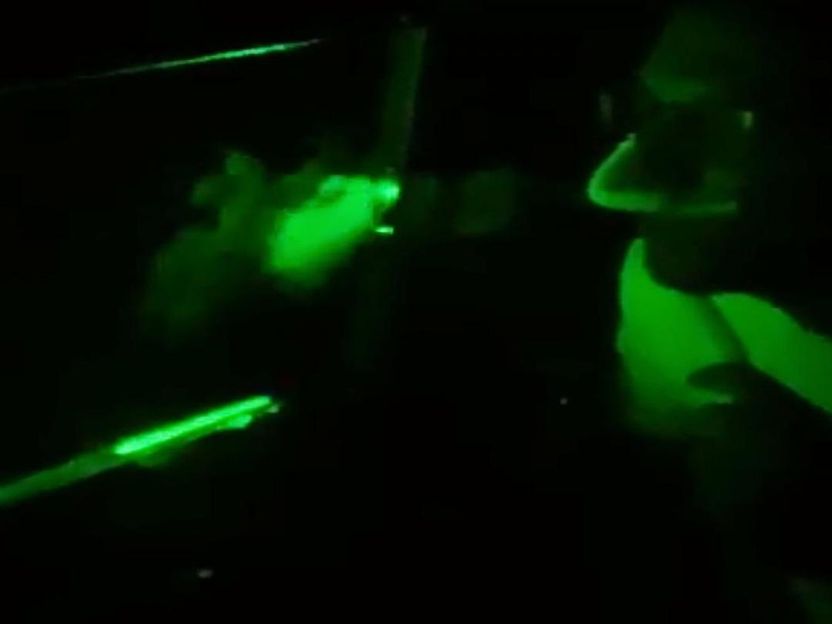Aerosol microdroplets inefficient carriers of COVID-19 virus
Modeling shows SARS-CoV2 isn't spread very well by the small droplets that linger longest
Aerosol microdroplets, the tiny particles that linger in the air longest after we talk, cough, or sneeze, do not appear to be extremely efficient at spreading the virus that leads to Covid-19.

A test subject coughs into a laser scanner during a University of Amsterdam study on how microdroplets spread the virus that leads to COVID-19.
University of Amsterdam
Modeling of SARS-CoV-2 transmission in confined spaces suggests aerosol transmission is not a very efficient route. The results were published in Physics of Fluids, by AIP Publishing.
Physicists and medical doctors at the University of Amsterdam's Van der Waals-Zeeman Institute used laser technology to measure the distribution of droplets released when people speak or cough. Test subjects spoke or coughed into a laser beam, and a jet nozzle was used to mimic tiny aerosol microdroplets. This allowed researchers to measure how droplets spread and how likely they are to pass along SARS-CoV2.
While the lingering microdroplets are certainly not risk-free, due to their small size they contain less virus than the larger droplets that are produced when someone coughs, speaks, or sneezes directly on us, said Daniel Bonn, one of the authors and institute director.
"Based on the current insights, we actually see that aerosol-wise, it's relatively safe to go into well-ventilated modern buildings, such as airports, train stations, modern offices, etc.," Bonn said. "Modern ventilation makes the aerosol infection risk not very large. The amount of virus in the small droplets is relatively small, meaning that it becomes dangerous if you're in a badly ventilated room for a relatively long time with an infected person or after an infected person has coughed there."
If someone enters a space even a few minutes after a mildly symptomatic carrier of the coronavirus has coughed in that area, the probability of infection is "rather low," according to the researchers. It is even lower if that person was only talking.
The findings, Bonn said, support the efficacy of wearing masks, social distancing, and other measures targeting the spread of larger droplets.
"They are so large that they fall onto the ground roughly within a meter from your mouth," he said. "If you want to minimize the risk of infection, you need to not only keep the 6 feet, or 1.5 meters, but also make sure the room you are in is well ventilated. And wash your hands."
The researchers acknowledge the study's findings are "necessarily subjective." But, Bonn said, the authors hope it provides some context as people consider their safety during the pandemic.
Original publication
Most read news
Original publication
Scott H. Smith et al.; "Aerosol persistence in relation to possible transmission of SARS-CoV-2 featured"; Physics of Fluids 32, 107108 (2020)
Organizations
Other news from the department science

Get the life science industry in your inbox
By submitting this form you agree that LUMITOS AG will send you the newsletter(s) selected above by email. Your data will not be passed on to third parties. Your data will be stored and processed in accordance with our data protection regulations. LUMITOS may contact you by email for the purpose of advertising or market and opinion surveys. You can revoke your consent at any time without giving reasons to LUMITOS AG, Ernst-Augustin-Str. 2, 12489 Berlin, Germany or by e-mail at revoke@lumitos.com with effect for the future. In addition, each email contains a link to unsubscribe from the corresponding newsletter.


















































